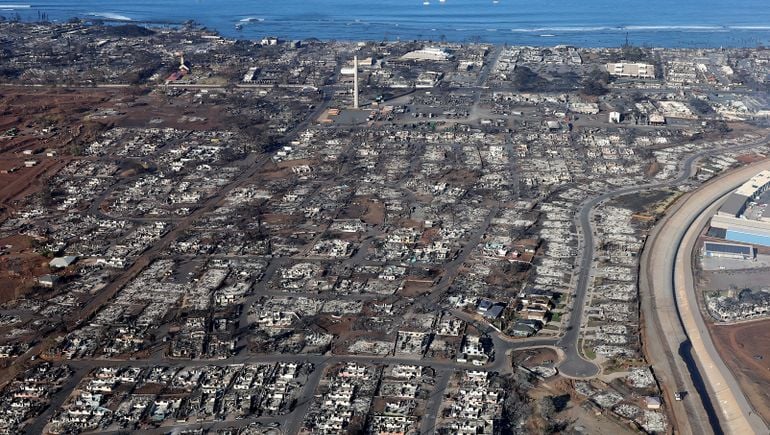Dive Brief:
- Older, dense construction with little fire resistance helped the Lahaina, Hawaii, fire to rapidly spread, creating the seventh most damaging wildfire in the U.S. since 1990 and the deadliest in the country in over 100 years, according to a new report from the Insurance Institute for Business and Home Safety.
- Many of the homes burned in the fire had components of wildfire-resistant construction, but weak points — often due to more combustible materials or older building practices — helped fuel the conflagration, the report said.
- About four in five buildings in Lahaina were single-family homes, largely built between the 1960s and 1980s. Nonetheless, newer homes and commercial construction used materials like concrete fiber board and stucco, which slowed the fire.
Dive Insight:
The Aug. 8 fire claimed over 100 lives and over 2,000 buildings in West Maui, as it battered the island’s infrastructure. The damage will likely total at least $6 billion, according to Hawaii Gov. Josh Green.
Lahaina had older electrical infrastructure above ground which contributed to over 14,000 households and businesses losing electricity.
Though aging buildings contributed, the largest contributor to the fire were dry grasslands from extractive agricultural practices and high winds.
IBHS found one small beacon of good news in its report: An unnamed new development, built between 2019 and 2020, largely survived the worst of the blaze. The neighborhood — bordered by Front Street on the west and Honoapiilani Highway to the east — is composed of single-family homes and multifamily units.
The development lost no single-family structures, but four multifamily structures ignited. Nonetheless, fires did not spread from structure to structure.
According to the report, reasons for the development’s relative success could have included:
- Upwind location and ember break from nearby commercial construction.
- Class A roof covers, specifically metal and asphalt shingles.
- Non-combustible wall cover materials.
- High wind-rated attic vents, which IBHS said can effectively reduce ember entry.
- Less dense vegetation and other connecting fuels between buildings.
- Less mature vegetation, due to the recent nature of the development’s construction.
The takeaway from the preliminary findings is that building codes protect property and save lives, the report said.
“Hawaii’s modern building code has high-wind requirements that introduced elements that helped newer construction resist wildfire conditions,” the authors wrote.
